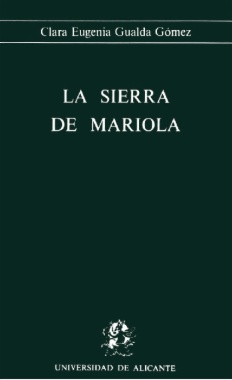Eulogy for a Brown Angel began a new chapter in the mystery genre with the creation of the first Chicana detective in American literature. Now available for the first time in Spanish, readers can discover, or rediscover, Lucha Corpi’s dynamic detective, Gloria Damasco, in the classic novel that started it all.
A Chicano Civil Rights march has been disrupted by the Los Angeles police, resulting in the gruesome death of a prominent reporter. The tear gas has barely settled when a small, defiled body is left on a street in Los Angeles. A feisty political activist finds the murdered child and begins a search for the murderer that will lead her on a trail of international conspiracy and bloody vengeance. Before long, two other people are dead, and Gloria is determined to piece the mystery together, no matter how long the search may last.
Adding to the mystery is Gloria Damasco’s dark gift, a puzzling extra-sensory awareness that forces her to confront situations in which solutions demand more than reason and logic.
Loa a un ángel de piel morena is a fast-paced and suspenseful novel, packed with an assortment of interesting characters. A member of the international writers’ circle, Sisters in Crime, Lucha Corpi brings the intrigue to a hard-hitting conclusion in the picturesque wine country of Northern California.
- Cover
- ÍNDICE
- INTRODUCCIÓN
- CAPÍTULO I: GEOTECTÓNICA: RASGOS GEOLÓGICOS, LITOLÓGICOS Y ESTRUCTURALES
- Introducción
- 1. MARCO GENERAL
- 2. EVOLUCIÓN GEOLÓGICA
- 2.1. Litología
- 2.2. Actividad tectónica y fases de plegamiento
- 3. INDIVIDUALIZACIÓN ESTRUCTURAL DEL ANTICLINAL
- 3.1. Depresiones y áreas sinclinales
- 3.2. Unidades geoestructurales del anticlinal
- CAPÍTULO II: CONDICIONAMIENTOS CLIMÁTICOS ACTUALES
- Introducción
- 1. ASPECTOS DINÁMICOS
- 2. FACTORES CLIMÁTICOS LOCALES: DEFINICIÓN DEL ÁMBITO Y TIPOLOGÍA CLIMÁTICA
- 2.1. Combinación de factores geográficos y topográficos
- 2.2. Tipología
- 3. ANÁLISIS DE LAS TEMPERATURAS
- 4. LAS PRECIPITACIONES: CARÁCTER OROGRÁFICO
- 5. RELACIÓN ENTRE LA DISTRIBUCIÓN DE LAS TEMPERATURAS Y LAS PRECIPITACIONES
- 5.1. Heladas-precipitación
- 5.2. Grado de aridez y balance hídrico
- CAPÍTULO III: AGENTES MORFOLÓGICOS Y FACTORES CONDICIONANTES EN EL MODELADO
- Introducción
- 1. PAPEL DEL ROQUEDO CALIZO
- 2. FRACTURACIÓN Y RED DE DIACLASAS
- 3. SISTEMA DE PENDIENTES
- 3.1. Pendientes inferiores a 10.°
- 3.2. Pendientes entre 10.° y 20.°
- 3.3. Pendientes entre 20.° y 30.°
- 3.4. Pendientes entre 30° y 40.°
- 3.5. Pendientes superiores a 40.°
- 3.6. Zonas llanas cacuminales
- 4. CONDICIONES MORFOCLIMÁTICAS
- 4.1. La influencia de condiciones pasadas
- 4.2. Dinámica actual
- 5. LA COBERTERA VEGETAL
- 5.1. Comunidades vegetales y su distribución espacial
- 5.2. Acción morfológica del tapiz vegetal
- 5.3. Tipología de vertientes
- CAPÍTULO IV: EL MODELADO KÁRSTICO
- Introducción
- 1. LAS FORMAS DEL RELIEVE KÁRSTICO
- 1.1. El Karst externo
- 1.2. El Karst interno
- 1.3. Acumulación hídrica subterránea y formas de emisión
- 2. RED FLUVIAL KÁRSTICA
- 2.1. Caracteres morfométricos y desorganización de la red
- 2.2. Los valles kársticos
- 2.3. Acción morfológica fluviokárstica
- 3. EVOLUCIÓN KÁRSTICA
- 3.1. Ciclo genético-evolutivo
- 3.2. Erosión kárstica actual
- CAPÍTULO V: MODELADOS PERIGLACIAL Y SEMIÁRIDO
- Introducción
- 1. FORMAS PERIGLACIARES
- 1.1. Mecanismos de destrucción de la roca y su distribución espacial
- 1.2. Formas del modelado periglacial
- 2. MORFOLOGÍA SEMIÁRIDA: LOS GLACIS
- 2.1. Depresión de Muro de Alcoy
- 2.2. Superficies glacificadas menores
- APÉNDICE
- CONCLUSIONES
- BIBLIOGRAFÍA GENERAL

